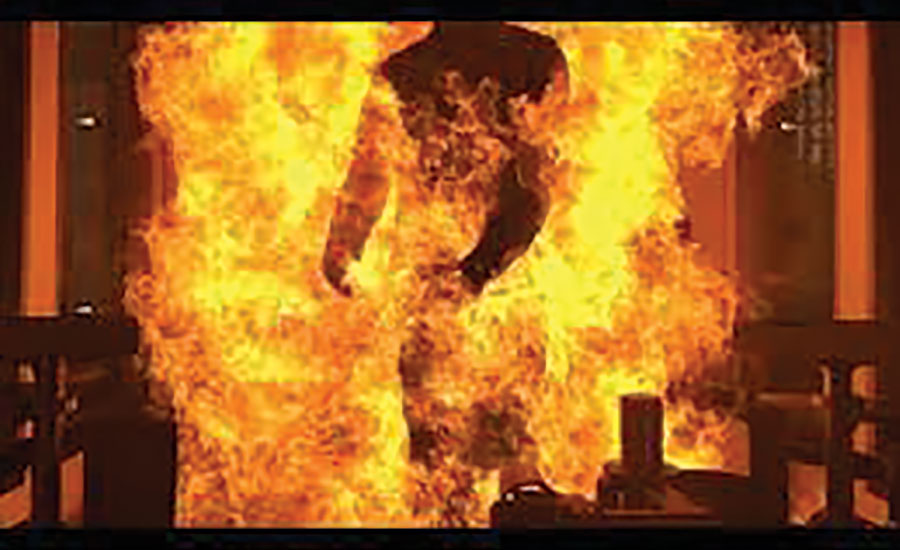A flash fire spreads rapidly through a diffuse fuel, such as dust, gas, or the vapors of an ignitable liquid, without the production of damaging pressure. The intensity of a flash fire depends on the size of the gas or vapor cloud. Hydrocarbon (oil and gas) flash fires generate temperatures of 1,000 to 1,900 degrees Fahrenheit. The duration of a flash fire can last up to five seconds.
This information is quoted in “NFPA 2112: Standard on Flame Resistant Garments for Protection of Industrial Personnel Against Flash Fire.” This voluntary standard of the National Fire Protection Association (NFPA) specifies the minimum performance requirements and test methods for flame-resistant (FR) fabrics and components and the design and certification requirements for garments for use in areas at risk from flash fires.
“A degree of protection”
More specifically, NFPA 2112 states the objective of its performance criteria and testing is to not contribute to the burn injury of the wearer – with the caveat that a degree of protection is provided to the wearer, reducing the severity of burn injuries resulting from short-duration thermal exposures or accidental exposure to flash fires. NFPA emphasizes that 2112 provides minimum requirements for design, construction, evaluation, and certification of FR garments worn by industrial personnel. 2112 does not give any guidance on how to match the PPE to a quantified hazard.
That’s the objective of NFPA 2113, which specifies selection, care, use, and maintenance requirements for garments compliant with NFPA 2112. Specific topics covered in 2113 include workplace hazard assessment, selection of flame-resistant garments, purchase specifications, requirements for wearing flame-resistant garments, cleaning, decontamination, storage, inspection, repairs, retirement, and disposal.
All FR clothing must meet the following requirements in order to comply with
NFPA 2112:
• achieve a 50 percent or less predicted body burn in a three-second exposure;
• resist melting, dripping, or after-flame burning;
• display appropriate labeling in an easy-to-see location;
• meet each of the NFPA 2112 requirements and tests, and should be UL certified.
The UL certification label should either be attached to the FR clothing label, or be positioned next to it.
Minimum performance
Achieving a 50 percent or less predicted body burn within a three-second exposure is the 2112 minimum used to qualify a garment as FR. Again, this performance spec doesn’t relate in any way to establishing a correct level of PPE needed in particular environments. Clothing tested to generate a 50 percent or less predicted body burn might represent an unacceptable level of risk to your workers.
2112 does not account for longer duration flash fires; does not account for possibly higher heat fluxes associated with combustible metal flash fires; and does not account for combustible dust deposited on the garment since its last cleaning and inspection. If you want a greater degree of protection, evaluate garments for their actual performance levels.
FR clothing that complies with NFPA 2112 and is UL-certified does not automatically guarantee sufficient protection. You’ll often need to go beyond 2112’s pass/fail criteria. Conduct risk assessments and work with FR clothing manufacturers to learn what clothing provides the levels of protection you require.







